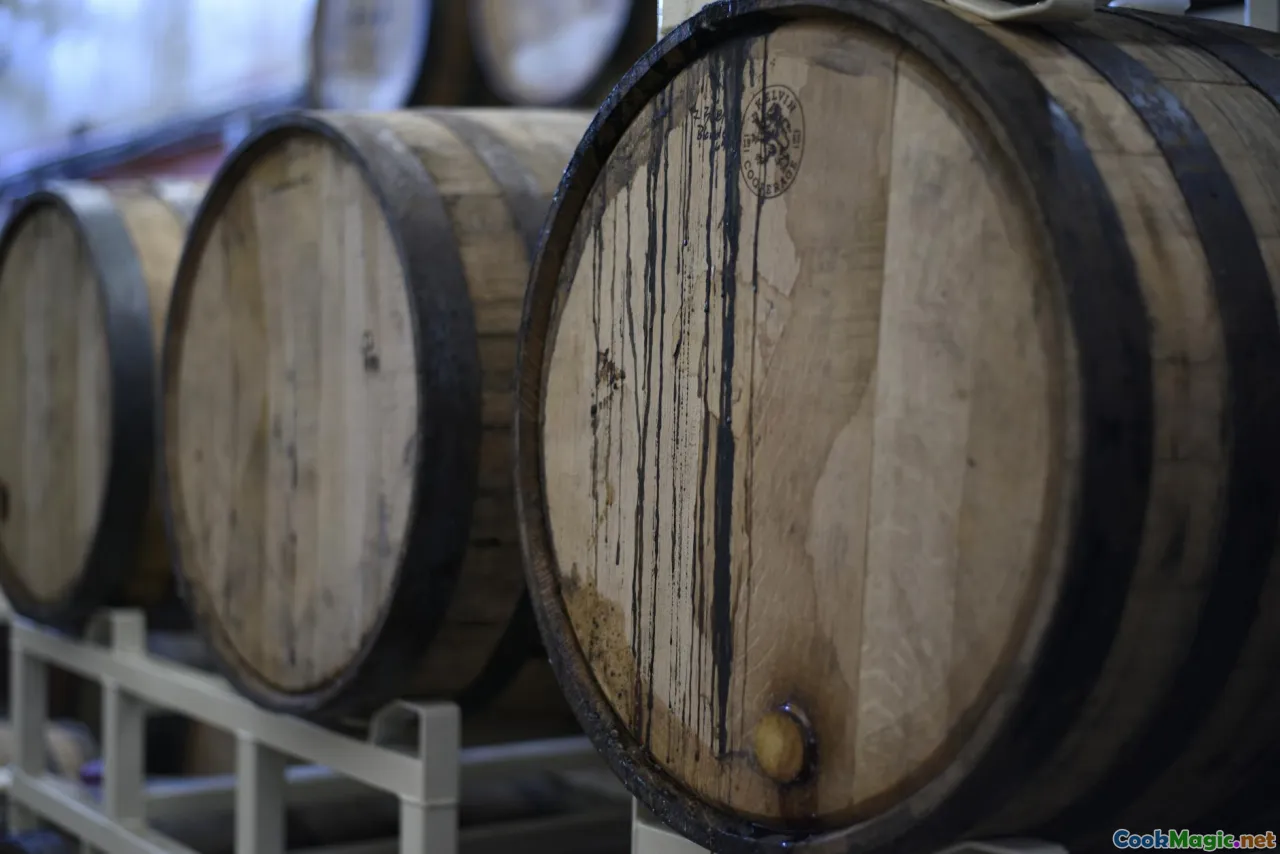Kvass Secrets Crafting the Perfect Belarusian Brew
8 min read Discover the rich history, craft techniques, and cultural significance behind making authentic Belarusian kvass—an age-old fermented drink that embodies tradition and flavor. May 01, 2025 06:00
Kvass Secrets: Crafting the Perfect Belarusian Brew
Imagine a warm summer day in Minsk, the sun casting a golden hue over the city’s cobblestone streets. The aroma of freshly baked bread mingles with the earthy scent of fermented grains, inviting locals and visitors alike to indulge in one of Belarus’s most cherished traditions: kvass. This humble, yet profoundly cultural beverage has been a staple of Belarusian life for centuries—a testament to the ingenuity of fermentation and the enduring spirit of local craftsmanship.
The Heart of Belarusian Culture: A Brief Historical Perspective
Kvass, a slightly tangy, mildly sweet, and effervescent drink, traces its origins back over a thousand years in Eastern Europe. In Belarus, it’s more than just a refreshment; it’s woven into the fabric of daily life, festivities, and communal gatherings. Historically, kvass was a vital source of nutrition for peasants and workers, providing vital calories and probiotics long before the concept of health-conscious eating gained popularity.
The tradition of brewing kvass was passed down through generations, often in rural villages where families perfected their recipes using local ingredients—rye bread, oats, or barley—and natural fermentation methods. Over time, kvass evolved from a simple bread-based beverage into an art form, with regional variations and modern craft techniques elevating its status.
What Makes Belarusian Kvass Unique?
Unlike commercial kvass found in supermarkets—often overly sweetened and pasteurized—authentic Belarusian kvass boasts a complex flavor profile that balances acidity, sweetness, and a subtle yeasty aroma. Its natural carbonation results from the fermentation process, giving it a lively, sparkling quality that awakens the palate.
Key characteristics include:
- Rich, malty aroma reminiscent of freshly baked rye bread.
- Tangy, slightly sour taste balanced with a touch of sweetness.
- Creamy, frothy head when poured fresh.
- Deep amber color, often cloudy due to sediment and natural fermentation.
This drink’s sensory appeal lies in its vivid contrast—crisp and refreshing yet warm with its bread-like depth.
The Art and Science of Making Kvass
Crafting the perfect kvass requires patience, precision, and a deep respect for traditional methods. Here’s a step-by-step guide to unlocking its secrets:
1. Selecting the Right Base
The foundation of authentic kvass is high-quality bread. Traditionally, rye bread is used, preferably homemade or artisanal varieties with a dense crumb and robust flavor. Some brewers incorporate oats or barley for added complexity.
2. Preparing the Mash
- Cut the bread into chunks and toast lightly to enhance the malty aroma.
- Soak the bread in warm water (around 30-35°C or 86-95°F) for several hours or overnight, allowing the flavors to infuse.
- Add sugar or honey if a sweeter profile is desired, though traditional recipes rely solely on the natural sweetness of bread.
3. Fermentation
- Transfer the mash to a fermentation vessel, typically a ceramic or glass jar.
- Add a starter culture—traditionally, a small amount of previous kvass batch or naturally occurring wild yeasts from the environment.
- Cover loosely with a cloth to allow gases to escape.
- Ferment at room temperature (18-22°C / 64-72°F) for 1 to 3 days, tasting periodically.
4. Secondary Fermentation and Carbonation
- Once the desired flavor is achieved, strain the liquid.
- Bottle the kvass in airtight containers, adding a small amount of sugar or fruit for natural carbonation.
- Allow it to ferment for another 1-2 days at room temperature.
- Chill thoroughly before serving.
5. Serving and Enjoying
Serve kvass in tall glasses, ideally with a sprinkle of fresh herbs or a slice of lemon. The drink’s effervescent nature makes it perfect for hot days or as a refreshing accompaniment to traditional Belarusian dishes like draniki (potato pancakes) orkaiski (cabbage soup).
Tips from the Craftsmanship: Achieving the Perfect Brew
- Use local, organic bread for the most authentic flavor.
- Maintain cleanliness to prevent unwanted bacteria.
- Experiment with ingredients like dried fruits, berries, or herbs to create signature variations.
- Patience is key—rushing fermentation can lead to flat or overly sour kvass.
Personal Reflections and Cultural Significance
In my journeys across Belarus, I’ve been privileged to visit small villages where grandmothers still brew kvass in traditional ways, their kitchens filled with the warm aroma of bread and fermentation. The act of brewing becomes a communal ritual, a way to connect with ancestors and celebrate the changing seasons.
One memorable experience was tasting homemade kvass during a midsummer festival in a Belarusian village, where the drink’s tangy sparkle complemented the hearty, rustic foods served amidst singing and dancing. That moment encapsulated the essence of Belarusian hospitality: simple, genuine, and rooted in tradition.
Modern Craft and the Future of Belarusian Kvass
Today, a new wave of craft brewers and food artisans are reviving traditional kvass recipes, infusing them with contemporary twists—adding ginger, mint, or even craft spirits—while honoring the age-old techniques. This renaissance not only preserves a cultural treasure but also introduces it to global audiences eager for authentic, healthful alternatives to sugary sodas.
Conclusion: Embrace the Spirit of Kvass
Crafting kvass is more than just a culinary project; it’s a journey into Belarus’s soul. With each batch, you participate in a centuries-old tradition that celebrates simplicity, patience, and the magic of fermentation. So, gather your ingredients, embrace the process, and toast to the enduring spirit of Belarusian culture—one bubbling glass of kvass at a time.
Na zdorovie! — To your health and happiness in every sip.









